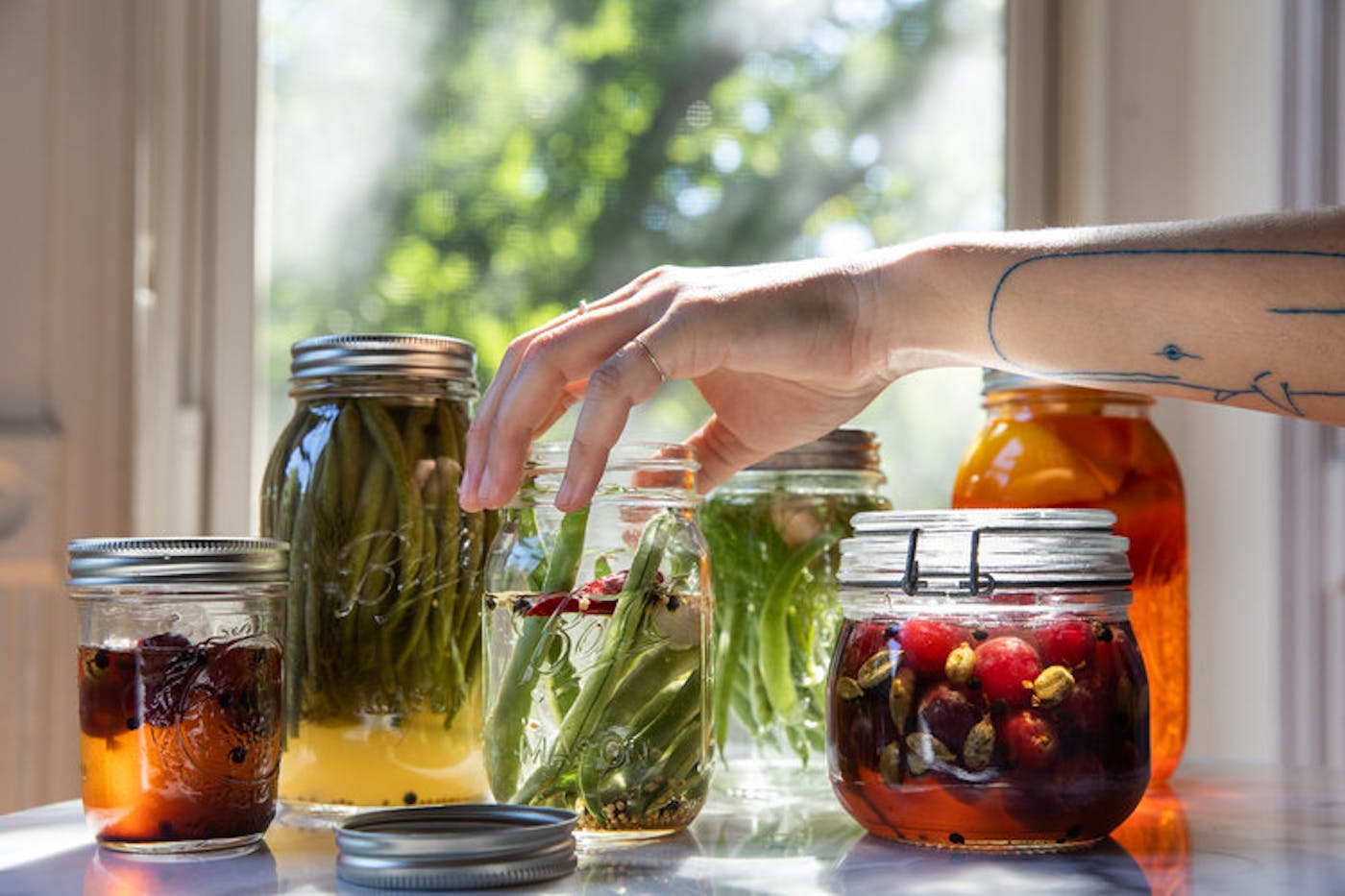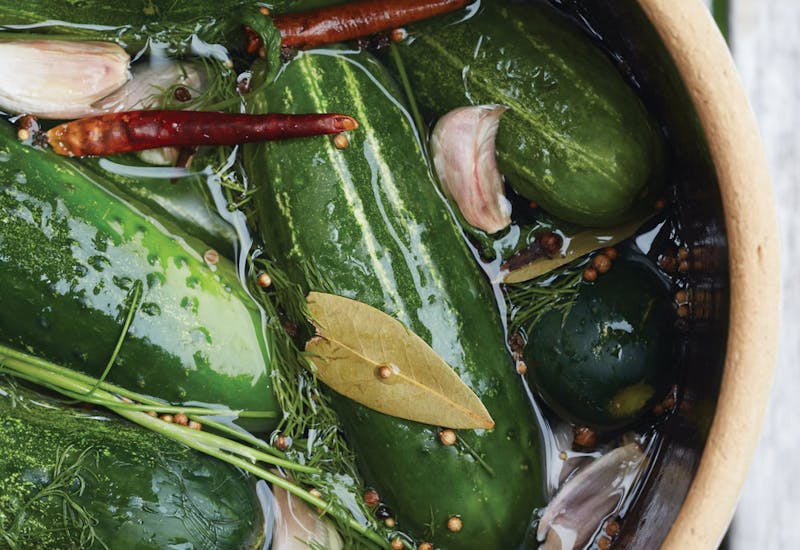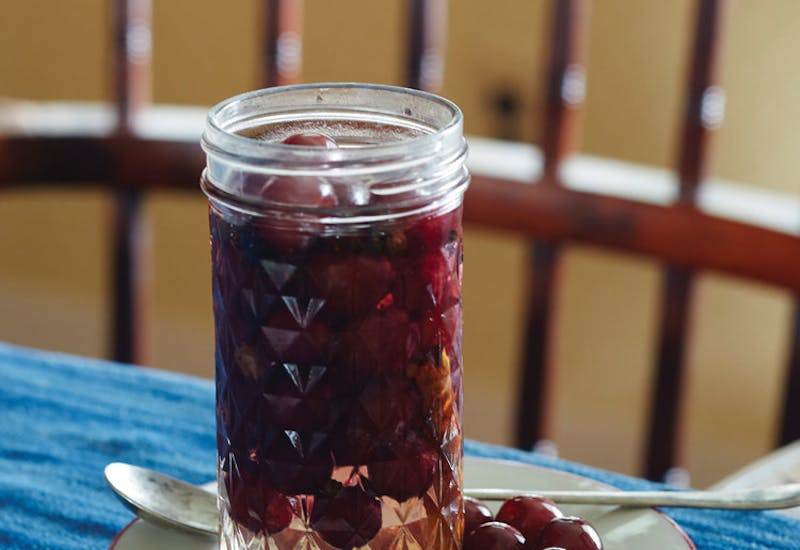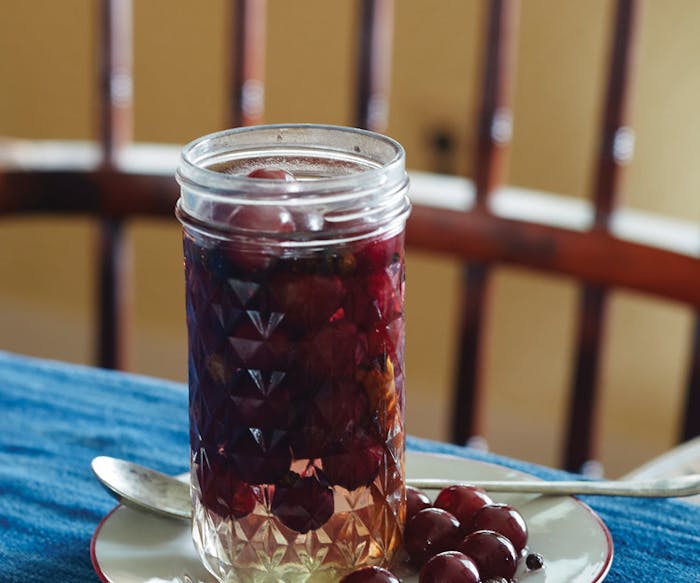Ask Jeffrey Yoskowitz the co-owner of The Gefilteria, an artisanal Jewish food company, to show you his business card and you’ll see a title only a handful of people, if that, possess: Chief Pickler. Open his refrigerator in Brooklyn and the title makes sense. There are always jars of fermented goods. In late July, it was homemade cream cheese, a few varieties of sour cream, cultured butter, pickled beans, sauerkraut, and kombucha.
Growing up in New Jersey, in a community of Holocaust survivors and their descendents, Jeffrey says Jewish food was mostly relegated to holidays — and trips to delis and dairy restaurants like Manhattan’s iconic Ratner’s. “Pickles were always in the house, but I’d be lying if I said I was a fan,” Jeffrey explains. At the delis, they would arrive gratis to accompany the meal. “[They] were an afterthought...there was something about not having to order it that never made me think that much about the pickle,” he adds.
That changed after college when Jeffrey worked at Adamah, a farm at Isabella Freedman, a Jewish retreat center in the Berkshires. “I packed my car and came straight from graduation,” Jeffrey says. The summer before, the farm had a bumper crop of cucumbers that needed to be used up. “The story I had heard, was that one of the [members] had a recipe from their grandparents to make a classic Jewish sour pickle,” he recalls. The members made Adamah’s first batch of pickles that summer.
By the following summer, when Jeffrey arrived at the farm, the team was building out The Picklearium. “I didn’t expect that I’d be into the pickling, he says. “I was really there to farm,” he says. But he developed a taste for the pickles as a snack after working in the fields, craving the salt following hours in the sun. He started working in The Picklearium regularly, making 55 gallon batches of classic sour pickles. “I just got so excited by eating them and the transformation process itself,” he says.
The following year in Israel, during a research fellowship, Jeffrey learned he wasn’t the only pickler in his family. His great aunt Rukhl, who immigrated to Israel from Wyszków, an hour outside of Warsaw, where his father family is from, was a fellow pickler. She used the same method as Jeffrey: “It was exactly the same as I made,” he says.
When he moved to New York in 2009, he found his way to fermentation gatherings (“I sort of jokingly call [those folks the] underground pickle community,” he says) and started to teach classes in the art of pickling.
“I got in on the circuit...as a pickle educator.”
In 2014, he carried his pickling tradition back to Poland when he was invited to teach a class at the JCC in Krakow. “I found myself in a room with 30 people, none of whom were Jewish — all of whom had been making pickles since before I was alive,” he recalls. The group discussed one of the most contentious issues in pickling: the way best way to yield crunchy pickles. “I came back with all sorts of tips to pickle better,” he says.
Today, when he teaches in New York or as far afield as Australia and Finland, his first priority is helping his students succeed in their first pickling endeavors, which is why he often starts with green beans (or dilly beans, as they’re called once pickled), which are easier to produce than those coveted crunchy cucumber pickles.
Pickled grapes, another recipe he shared with us, came later, he says, when he and business partner Liz Alpern were planning their excellent cookbook “The Gefilte Manifesto.” “I don’t remember where we first read about it… [but] we decided we had to experiment and find our own recipe,” Jeffrey explains. The grapes pair well with cheese as a prelude to a meal, or make for an unexpected addition to a pickle plate. At their core, they accomplish the team’s mission. Jeffrey says:
“We [are] always trying to think about how to make these Ashkenazi foods part of our everyday life”
There is an excellent Fermentation 101 Guide that can be found on pages 44-48 of The Gefilte Manifesto for those who are interested in learning more or taking a deeper dive into the world of pickling.




